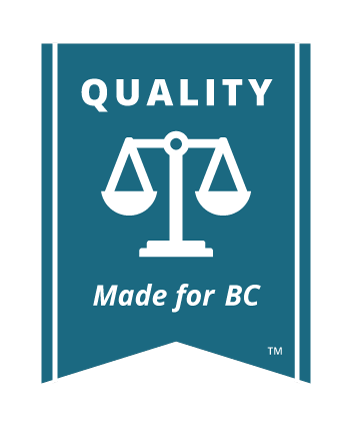Notice of Application
You begin an application by preparing, filing, and delivering a notice of application to the other parties. If you prepare and deliver the notice of application, you are the applicant. If you receive a notice of application from another party, you are the application respondent. A notice of application must be in Form 32. It must not exceed 10 pages (other than any draft order you attach).

Find the Form
Form 32 Notice of application
Before preparing the application, discuss the date of the hearing with the other party to choose a date when you are both available. If you set a date for the hearing when the other party is not available, you will both have to appear in Court when the other party applies to adjourn the hearing. This is an unnecessary waste of time and costs. However, if you cannot agree on a date, you can choose a date to put in the notice of hearing. If you expect the hearing to take more than 2 hours, the Court registry will fix the date and time of hearing.
In almost all cases, your application should be heard in the courthouse where the notice of civil claim was filed. If you want to have the application heard somewhere else, see Rule 8-2 for information about changing the place of the hearing.
What is in a Notice of Application:
- The top section of the notice of application sets out
- Who you are serving with the documents
- The address of the Court where the application will be heard
- The date and time of the hearing
- Part 1 requires you to set out the order you are asking the Court to make. This information should be written in numbered paragraphs. The notice of application should clearly state the order you want because you will use this to draft your order. Remember that you can ask for more than one thing in your application. For example, you may want to get further documents and an order requiring a party to attend an examination for discovery. However, each thing you are asking for should be set out in a separate paragraph. You can also attach a draft of the order you are seeking
- Part 2 asks you for the factual basis of your application. You need to write, in numbered paragraphs, a brief summary of the facts supporting the application
- Part 3 you must set out the legal basis of the application, including the rule or enactment (e.g. regulation or statute) that gives the Court the power to make the order you are seeking. If you see a lawyer before preparing your notice of application, this is something you should ask about
- Part 4 requires you to list the affidavits and any other material that you are going to rely on in making your application. You can also rely on other documents such as pleadings, answers to interrogatories, or examination for discovery excerpts
- Time Estimate: You are required to set out in the notice of application how long you think your application will take to be heard. In this estimate, you must take into account the time you think it will take the other side to respond to your submissions in Court. It is important to be as accurate as possible in giving this time estimate to the Court
- Data: You must complete the data collection information in the appendix to the form
If you are the plaintiff and you want to add someone as a party to the action after the case has already been started, then you would make reference to Rule 6-2, which gives the Court the power to add parties.
If there is no rule that deals with the order you want the Court to make, you need to rely on the inherent jurisdiction of the Court. The inherent jurisdiction of the Court is the power that judges have over and above the Rules to make orders to do justice between the parties. If you are relying on this power, you should say that in the notice of application. Remember that masters have limited jurisdiction. If you require the Court to make an order under its inherent jurisdiction, the matter may have to be heard by a judge.
Written Argument
If your application will take longer than 2 hours, you may also submit written submissions, which include a summary of your argument, and an explanation of how the case law and legislation supports your position. This is done by including a written argument in the Prepare Supporting Documents.
If your application is set for less than two hours you are not allowed to file a written argument ahead of time. However, you are allowed to hand up a written outline of the submissions you plan to make in Court orally. The idea is that this is not a separate submission from what you say, but it allows the Court to follow along.
If you have a chance to prepare written material for the Court, either in the form of a full written submission or an outline of your argument, it is generally a good idea to do so. The Court will find it easier to follow your argument if it has it in front of it. Further, if the judge takes some time to think about your case before deciding, if they have your written material they may be more likely to understand your key points.
Serving Your Documents
You must serve these documents on all parties of record, and on every other person who may be affected by the orders sought:
- A copy of the filed notice of application
- A copy of each of the filed affidavits and documents that have not already been served on that person
- If the application is brought in a summary trial, any notice that you are required to give under Rule 9-7(9)
You must serve the filed notice of application and all other filed affidavits and documents at least 8 business days before the date set for the hearing of the application. If the hearing is a summary trial, the documents must be served at least 12 business days before the date set for hearing (Rule 8-1(7)). A business day means a day on which the court registries are open for business.

Read the Rules
Rule 8-1(7) Service of application materials
There is a special procedure for urgent applications, which allows you to bring an application on less notice than you would normally require. For example, if the legal dispute is about a piece of your machinery that the defendant is about to sell, you could make an application to Court, on short notice, asking the Court to stop the sale.
A short notice application may be made by requisition in Form 17.1, without notice to the other party. The full procedure is described in Rule 8-5. For more information on requisitions generally, see Requisitions.

Read the Rules
Rule 8-5 Urgent applications







 JusticeEducation.ca
JusticeEducation.ca JusticeEd
JusticeEd /JusticeEducation
/JusticeEducation